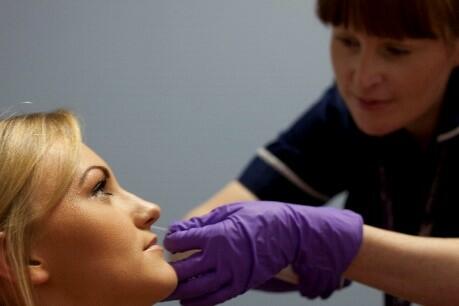
LSTM’s respiratory group is currently recruiting volunteers for their study looking at the effect of the new nasal spray flu vaccination on the carriage of pneumococcal bacteria in the nose.
LSTM’s respiratory group is currently recruiting volunteers for their study looking at the effect of the new nasal spray flu vaccination on the carriage of pneumococcal bacteria in the nose.
The study comes as a result of a 2.5 million USD grants awarded to the team by the Bill and Melina Gates Foundation so that the research could be carried out utilising the unique Experimental Human Pneumococcal Carriage (EHPC) model, developed at LSTM over the last seven years. The model allows volunteers to have pneumococcal bacterial placed directly into the nose to examine the immune responses in a controlled manner.
Working with the Royal Liverpool University Hospital, the team at LSTM, led by Dr Daniela Ferreira, will recruit 130 volunteers to the first phase. Half will receive the traditional flu vaccine, which is a non-live vaccine delivered by a needle into the arm, with the others receiving the new live attenuated vaccine as a nasal spray which, already offered in the USA, is currently being rolled out as the vaccine of choice for children in the UK. Using the EHPC model all participants will then have pneumococcal bacteria placed directly in the nose three days after vaccination.
Volunteers then have their immune responses measured on six occasions over the next month and it is hoped that the results will be available by the end of February 2016. Dr Ferreira said: “Flu is a potentially very serious virus which can lead to complications, so it is important that vulnerable groups are vaccinated against it. Children are recognised as carriers of the virus, so it makes sense to vaccinate them too, and we know that the new nasal spray vaccination is safe and effective against flu. However it is vital that we understand and are able to measure the synergy between the virus and the pneumococcal bacteria that is already present in over half of children’s noses. Our model will allow us to replicate those conditions in a controlled and non-invasive manner using healthy adult volunteers, giving us an insight for the first time into the relationship between flu and increased pneumococcal in the nose which could lead to increased transmission of the bacteria and pneumonia incidence.”
If you would like to take part in the study read more about it here.